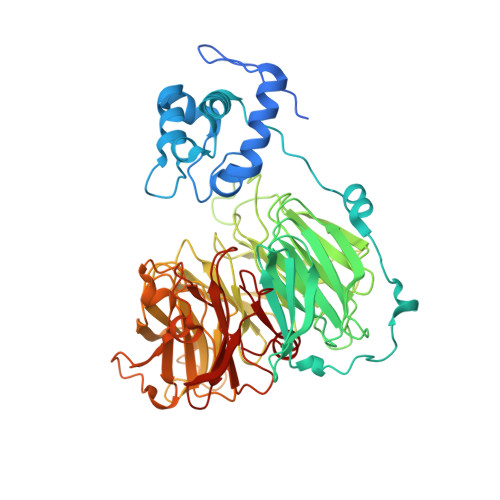X-Ray Crystallographic Study of Cyanide Binding Provides Insights Into the Structure-Function Relationship for Cytochrome Cd1 Nitrite Reductase from Paracoccus Pantotrophus.
Jafferji, A., Allen, J.W., Ferguson, S.J., Fulop, V.(2000) J Biol Chem 275: 25089
- PubMed: 10827177
- DOI: https://doi.org/10.1074/jbc.M001377200
- Primary Citation of Related Structures:
1E2R - PubMed Abstract:
We present a 1.59-A resolution crystal structure of reduced Paracoccus pantotrophus cytochrome cd(1) with cyanide bound to the d(1) heme and His/Met coordination of the c heme. Fe-C-N bond angles are 146 degrees for the A subunit and 164 degrees for the B subunit of the dimer. The nitrogen atom of bound cyanide is within hydrogen bonding distance of His(345) and His(388) and either a water molecule in subunit A or Tyr(25) in subunit B. The ferrous heme-cyanide complex is unusually stable (K(d) approximately 10(-6) m); we propose that this reflects both the design of the specialized d(1) heme ring and a general feature of anion reductases with active site heme. Oxidation of crystals of reduced, cyanide-bound, cytochrome cd(1) results in loss of cyanide and return to the native structure with Tyr(25) as a ligand to the d(1) heme iron and switching to His/His coordination at the c-type heme. No reason for unusually weak binding of cyanide to the ferric state can be identified; rather it is argued that the protein is designed such that a chelate-based effect drives displacement by tyrosine of cyanide or a weaker ligand, like reaction product nitric oxide, from the ferric d(1) heme.
Organizational Affiliation:
Laboratory of Molecular Biophysics, Department of Biochemistry, University of Oxford, United Kingdom.


















